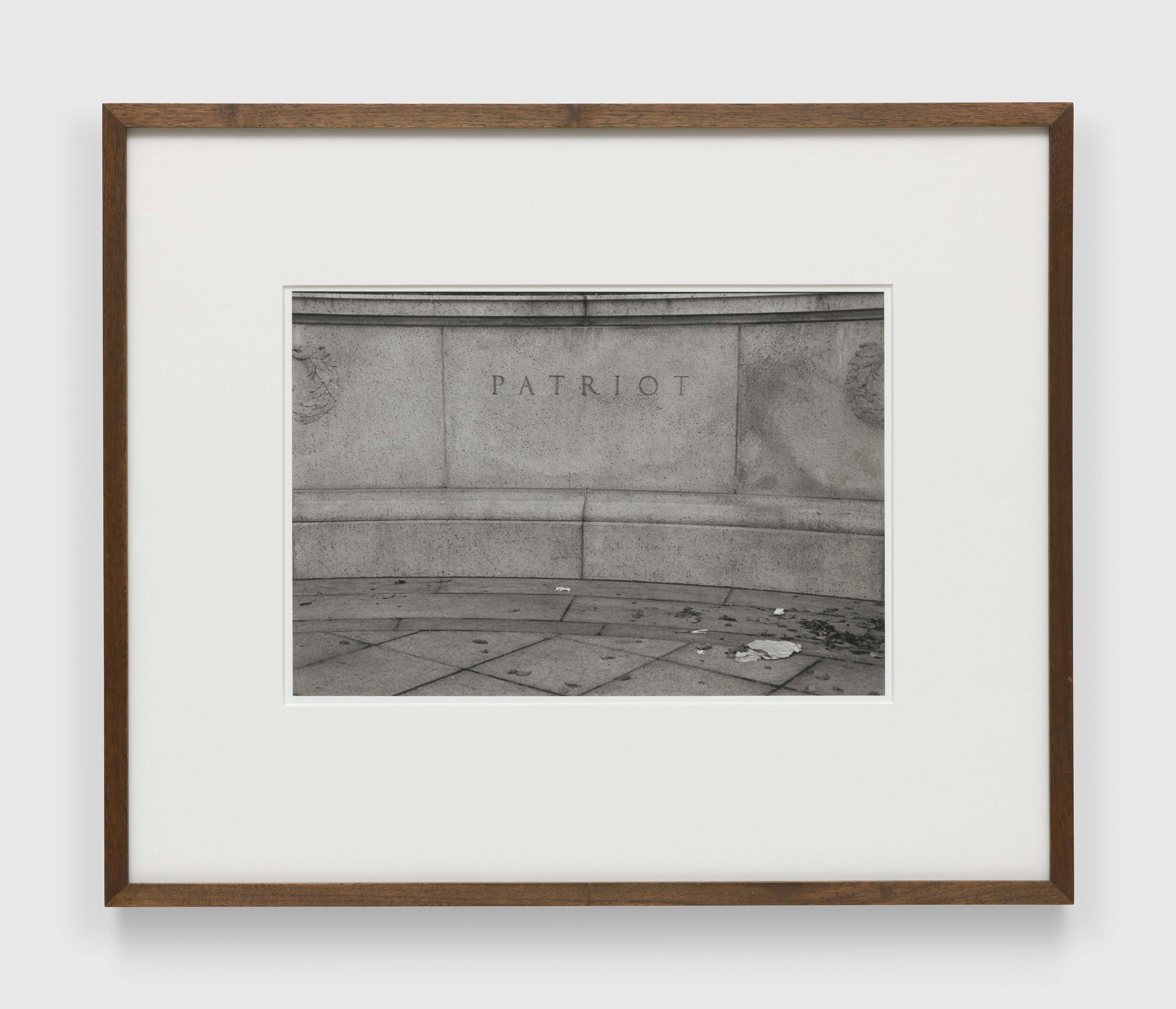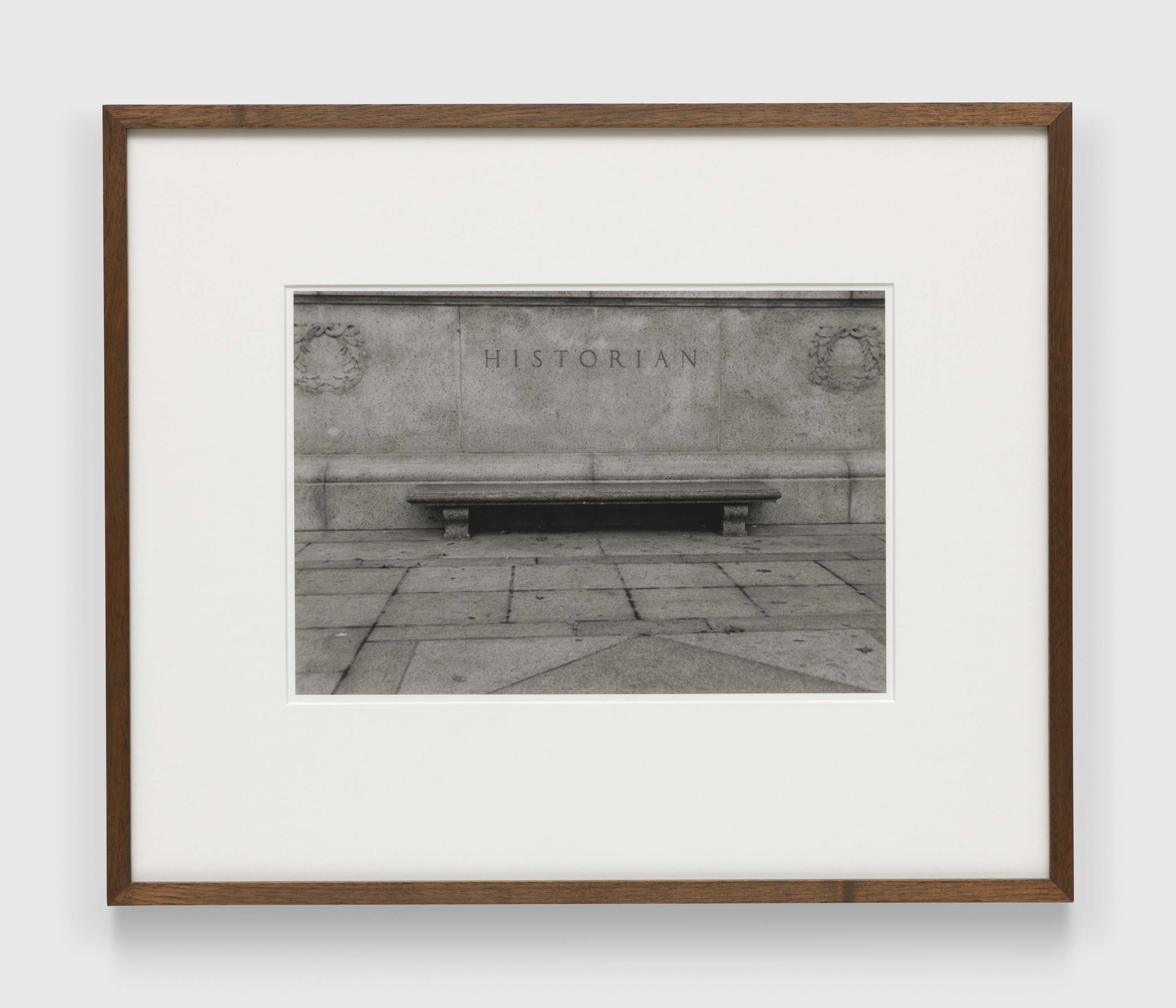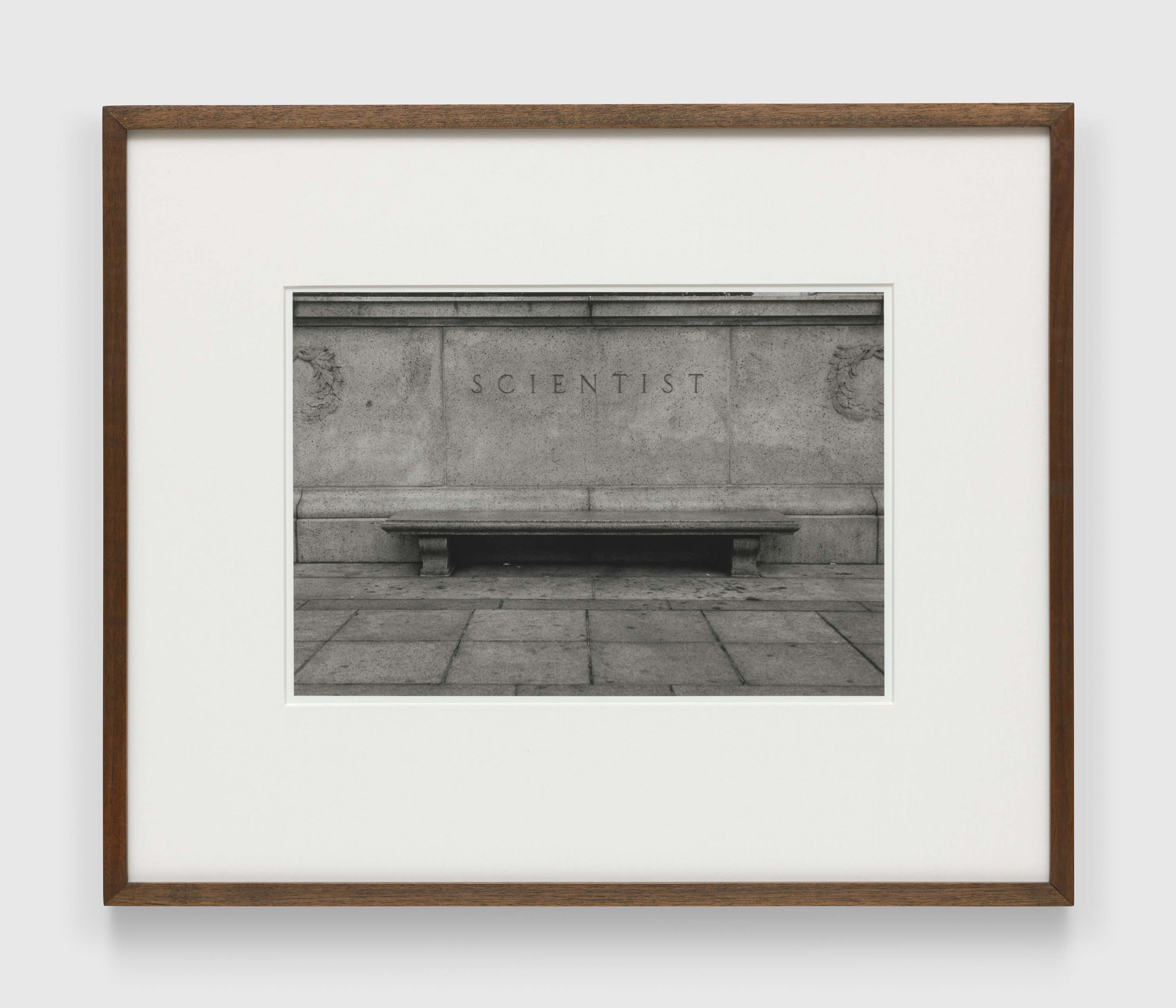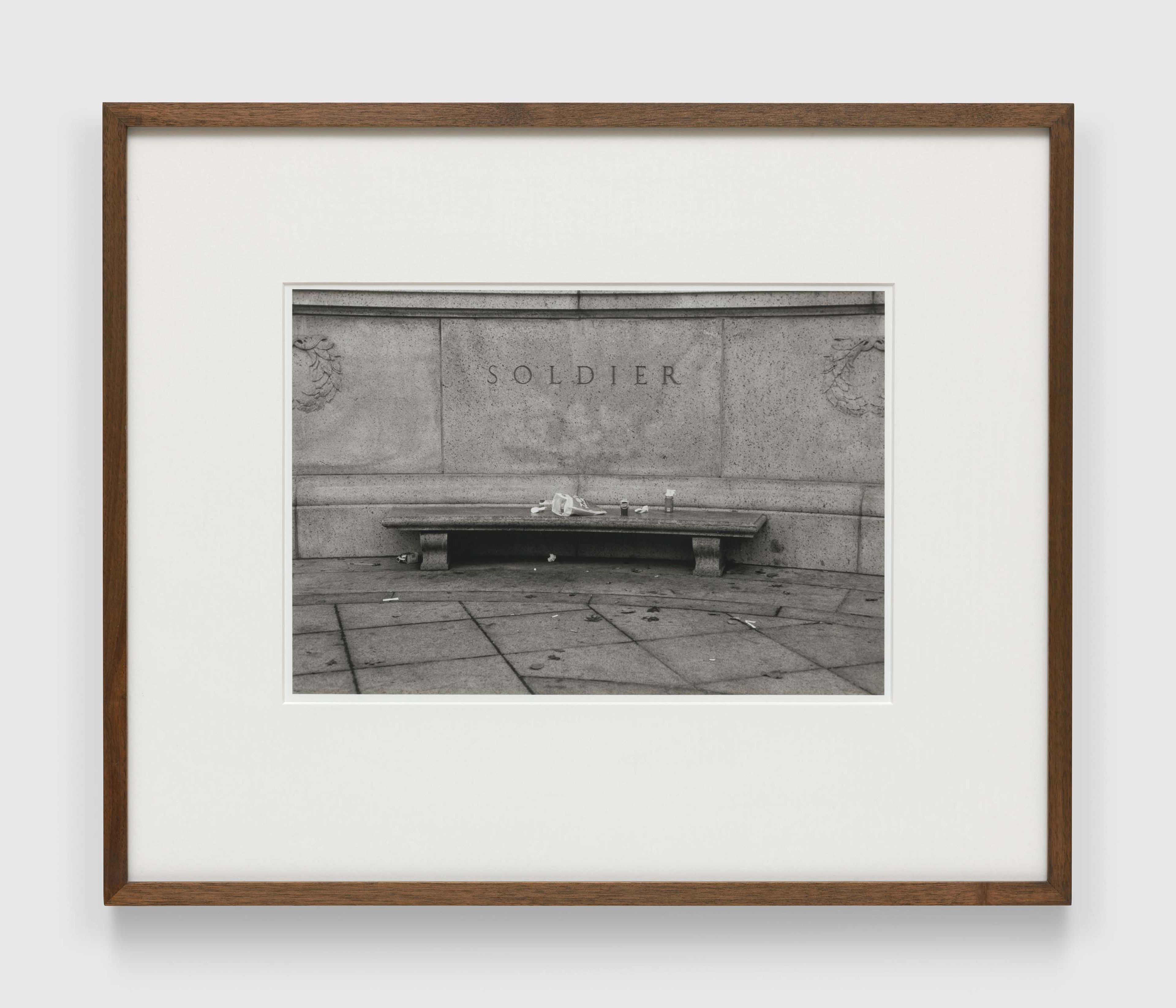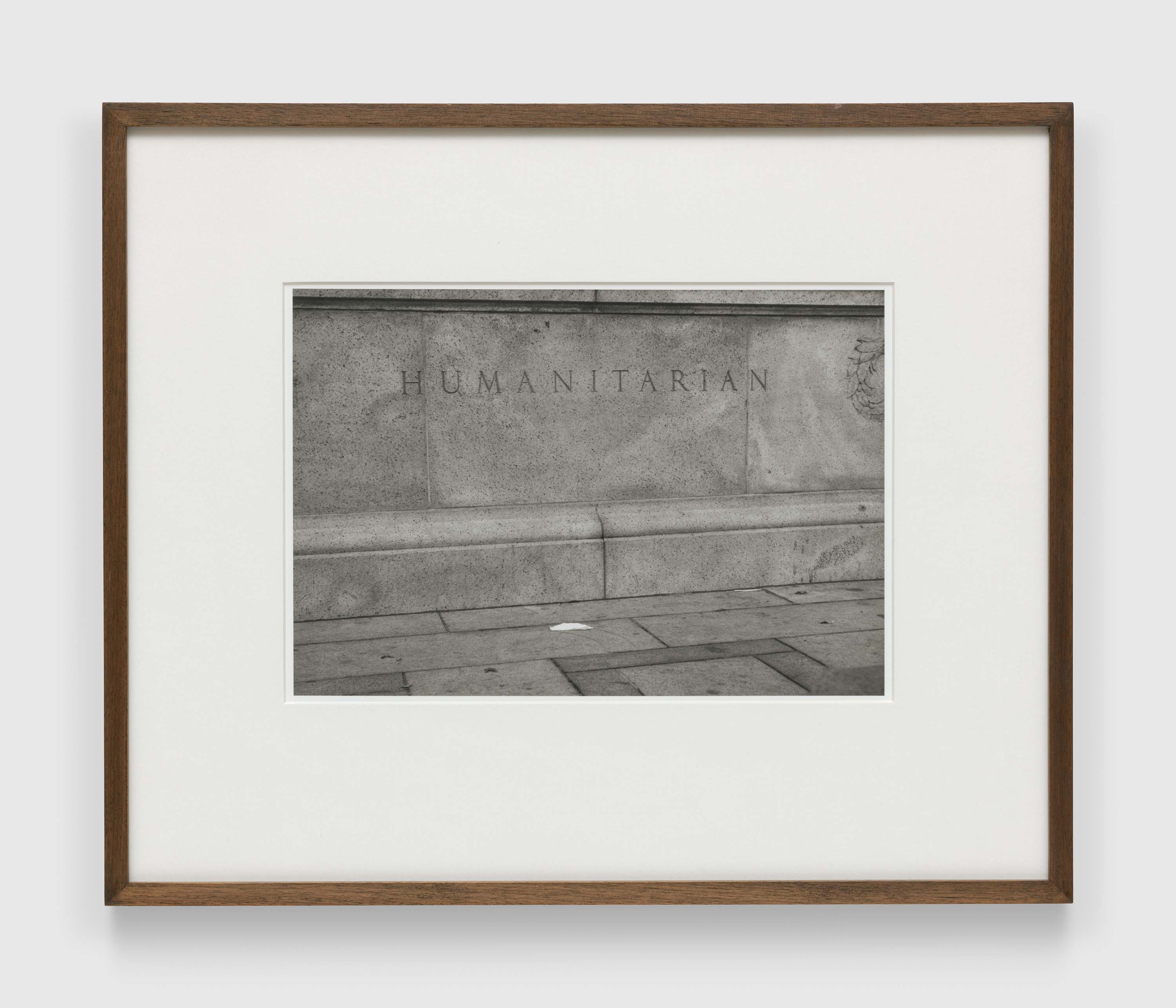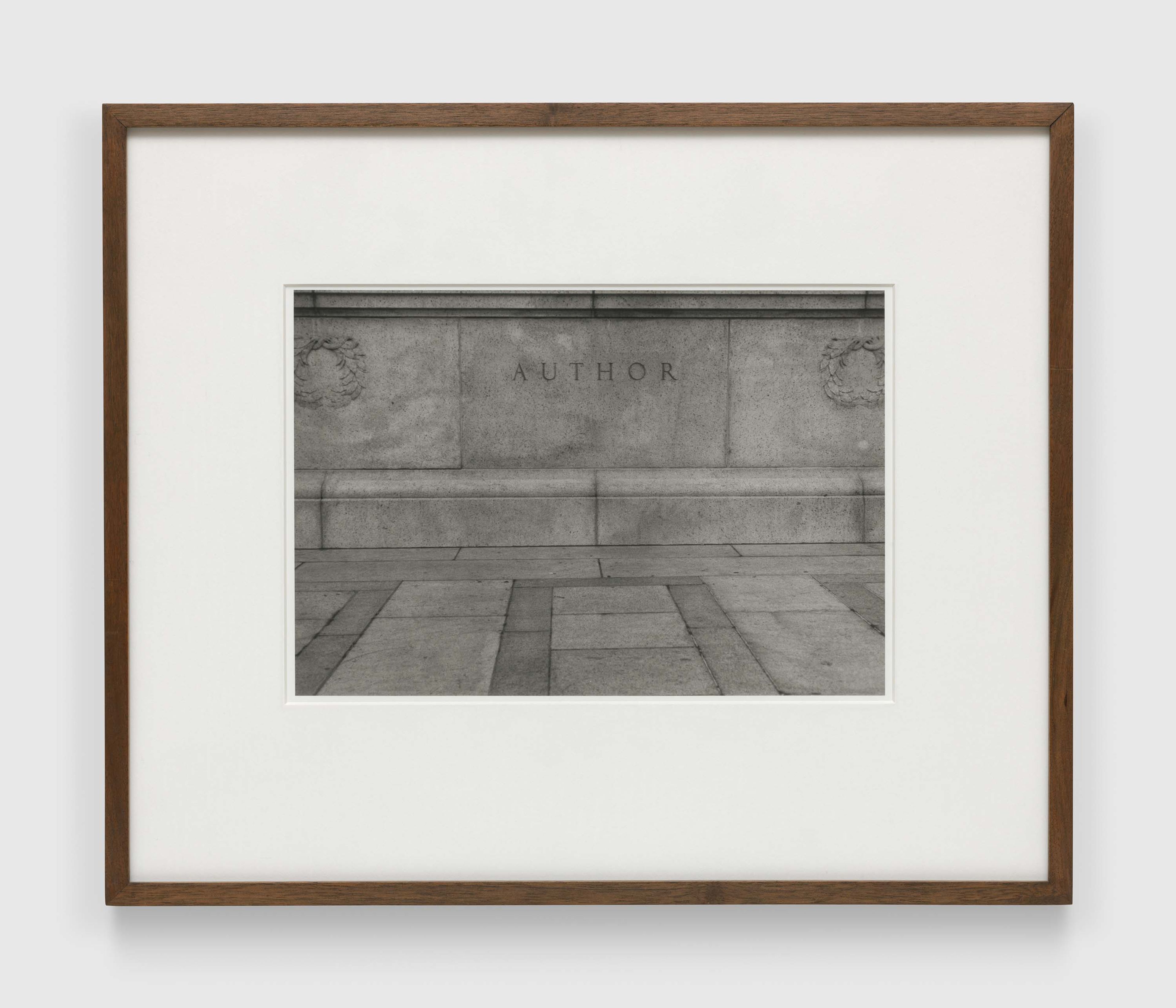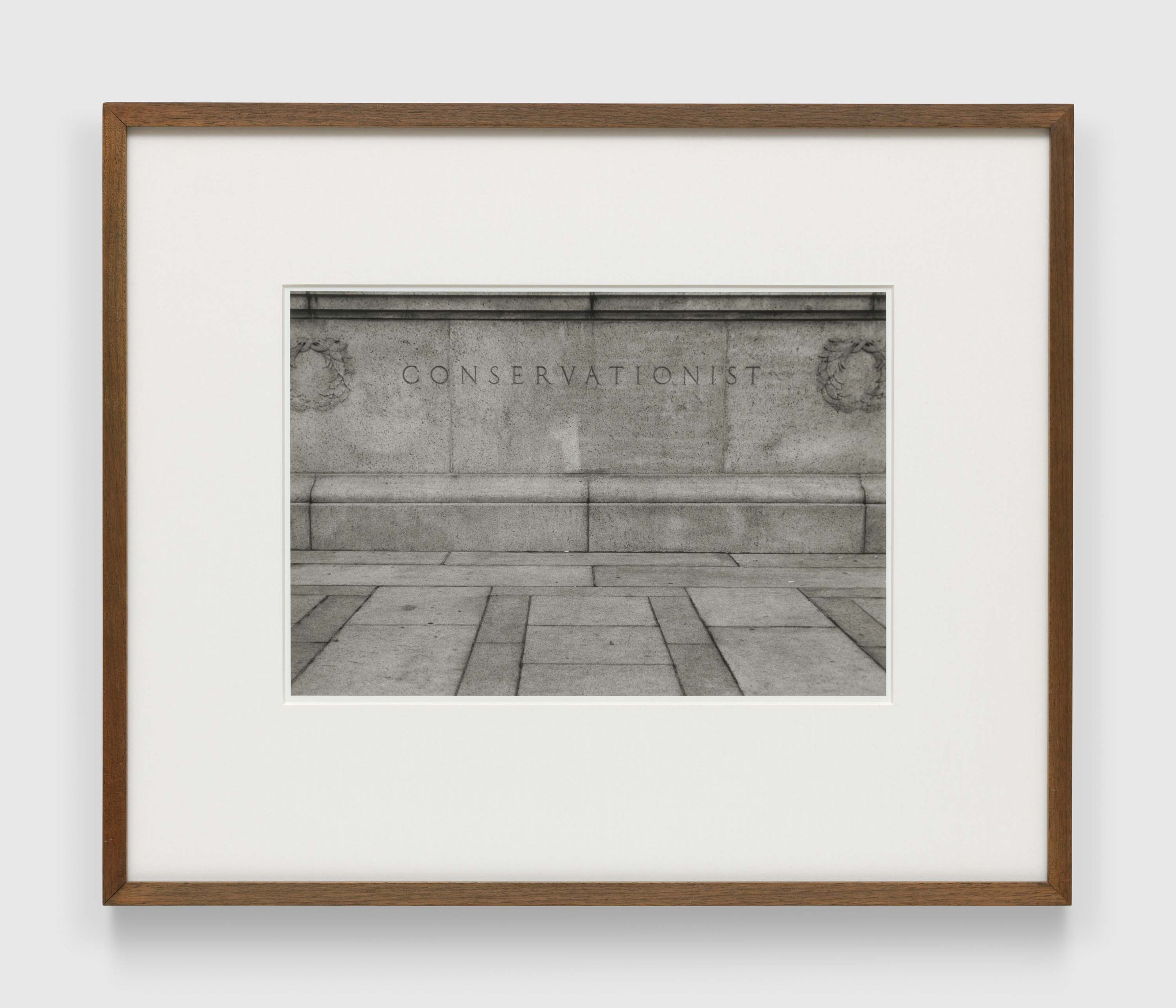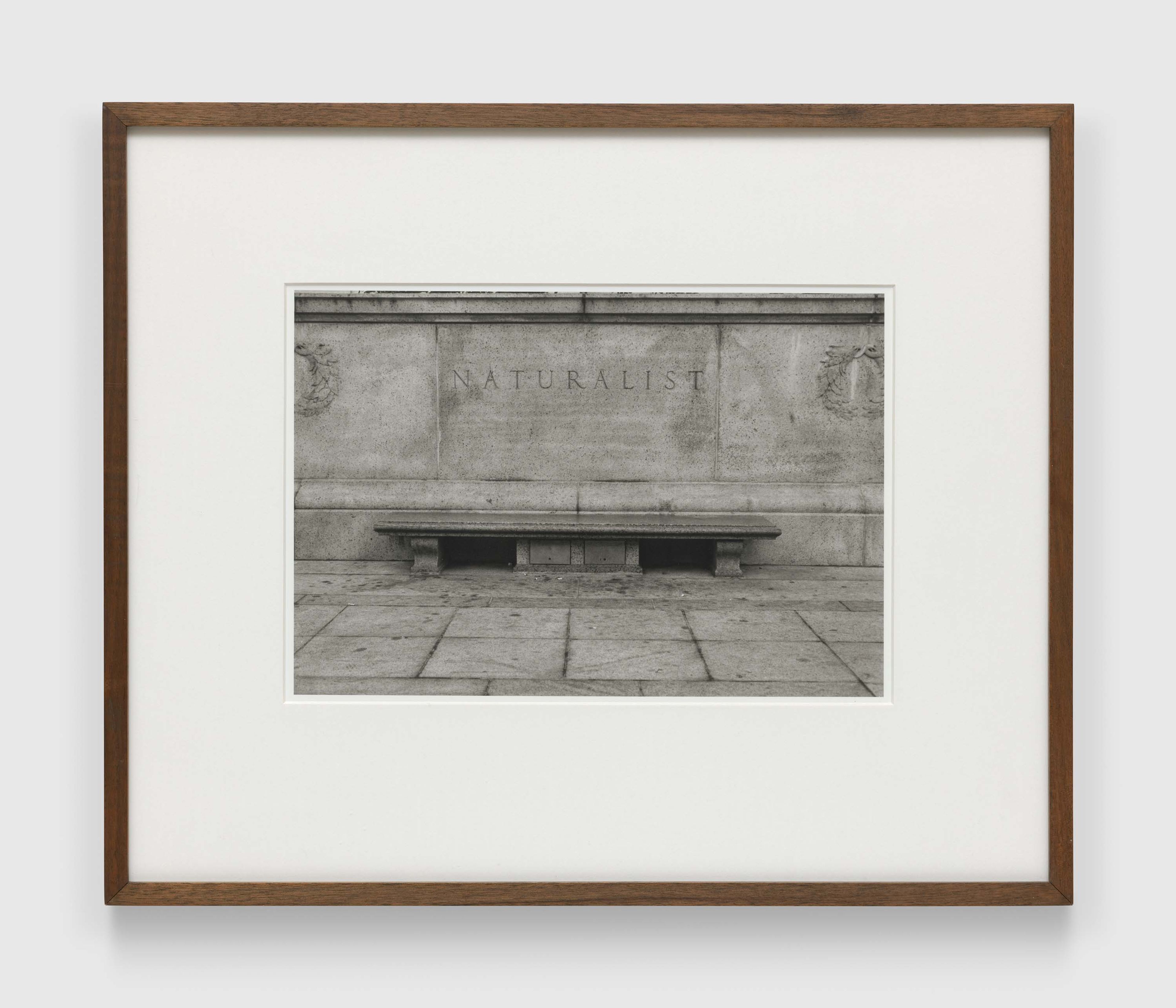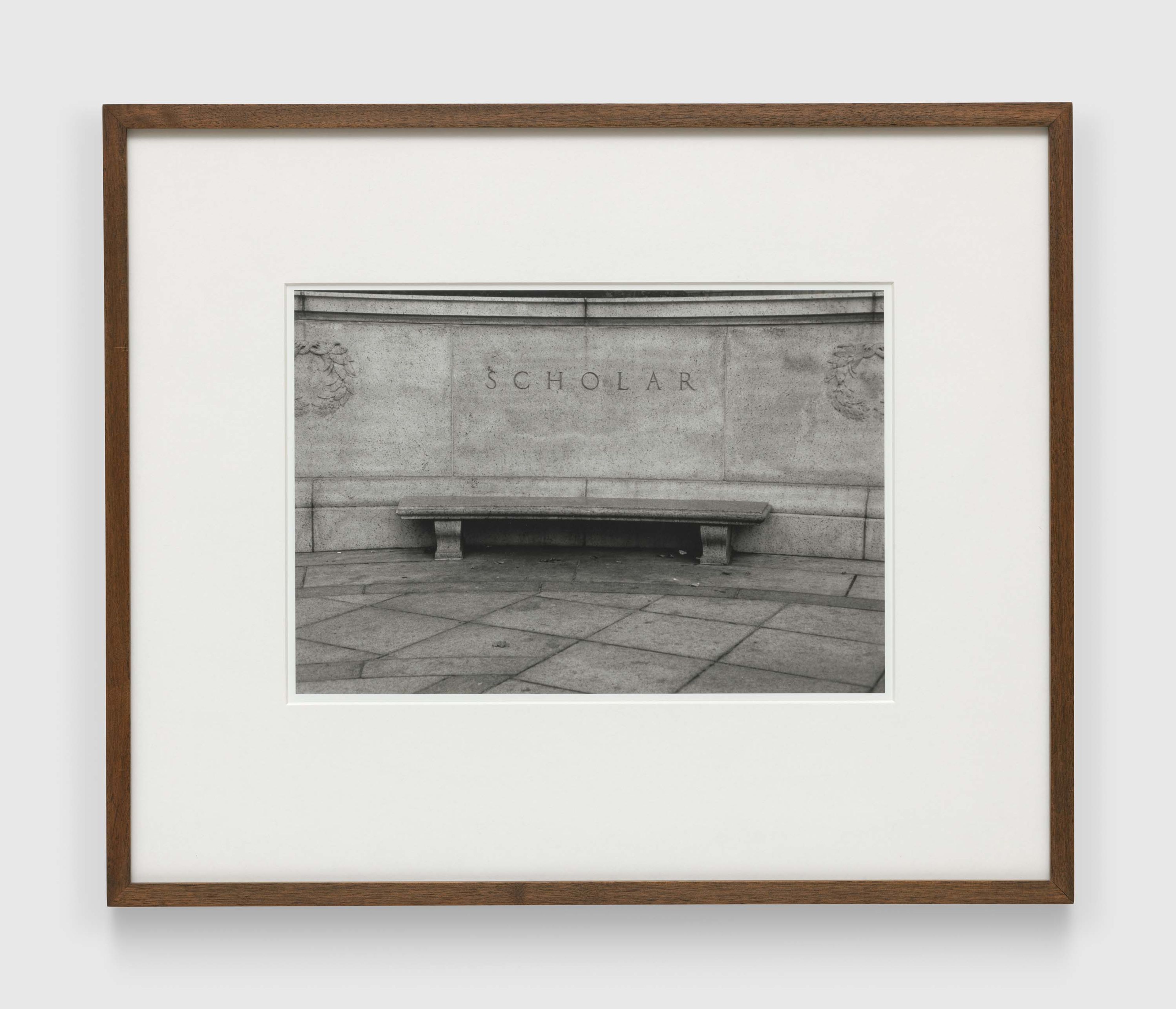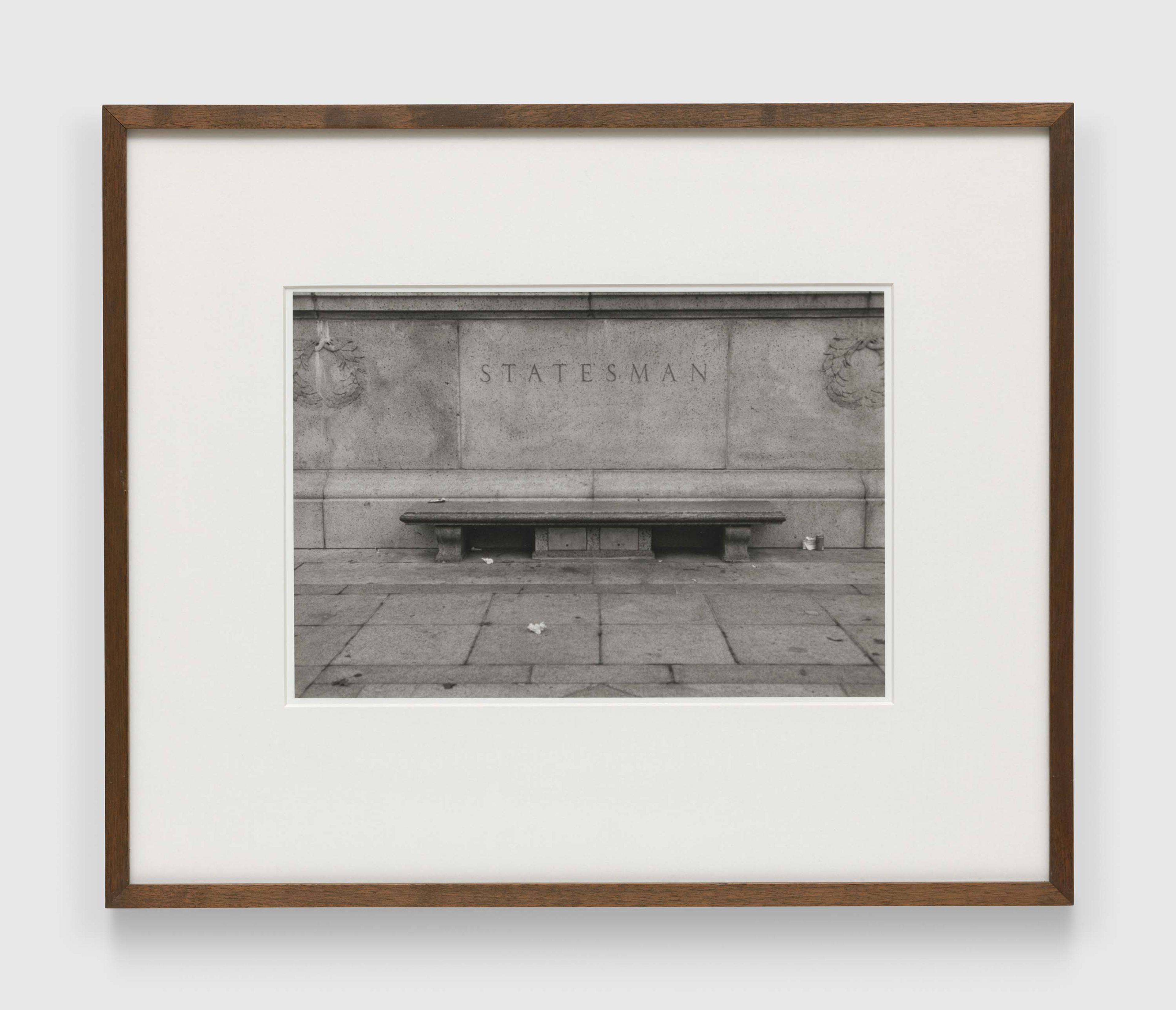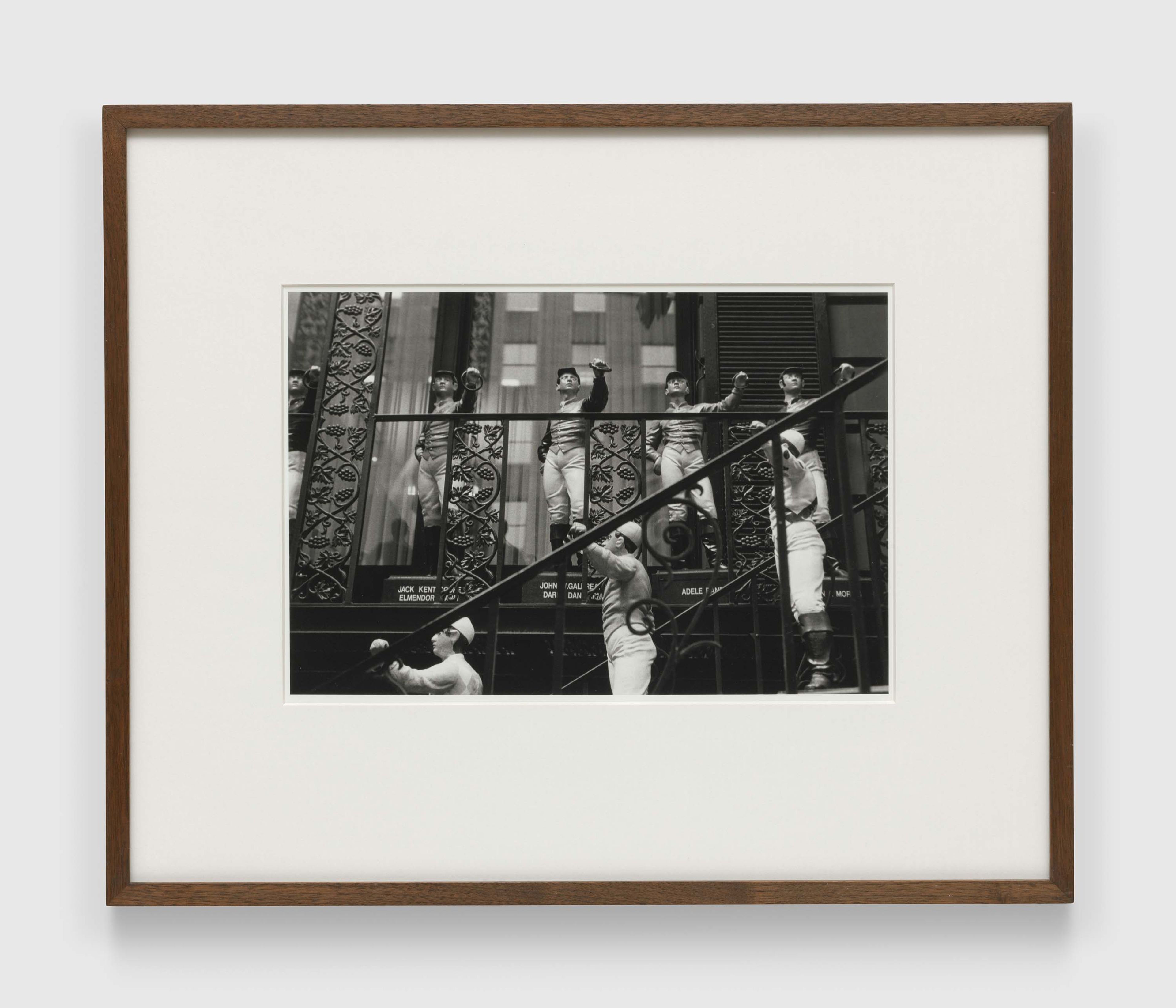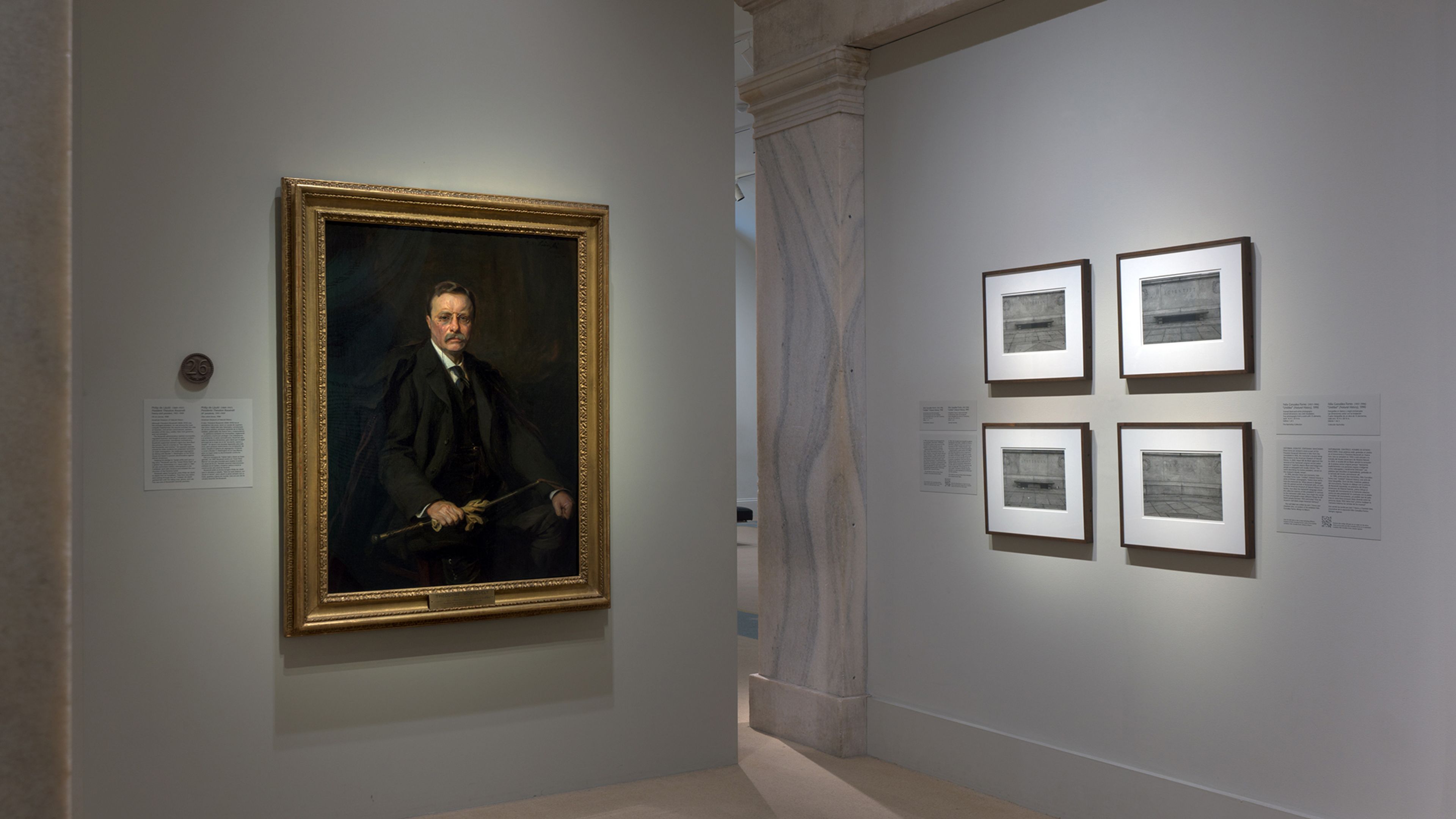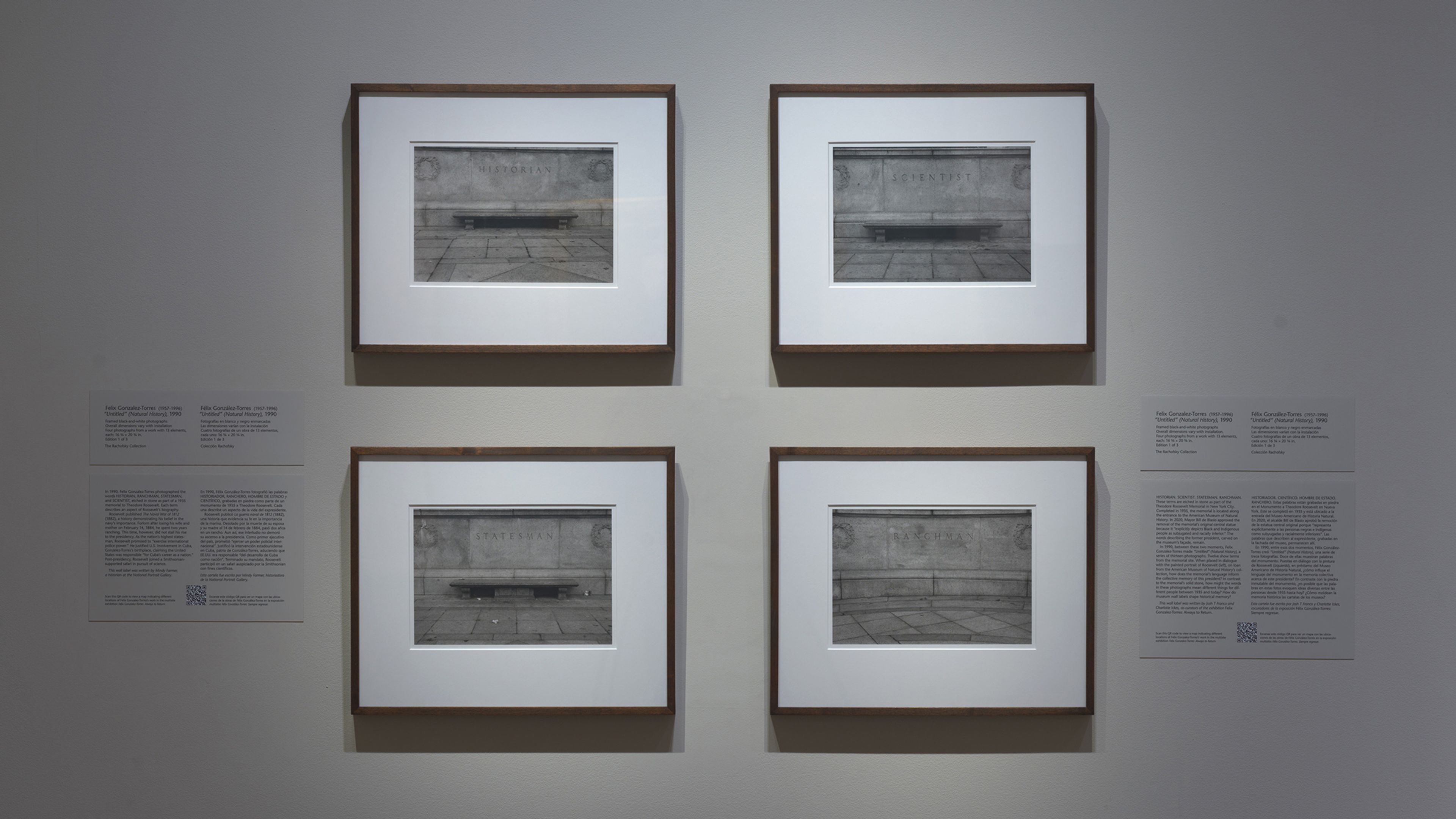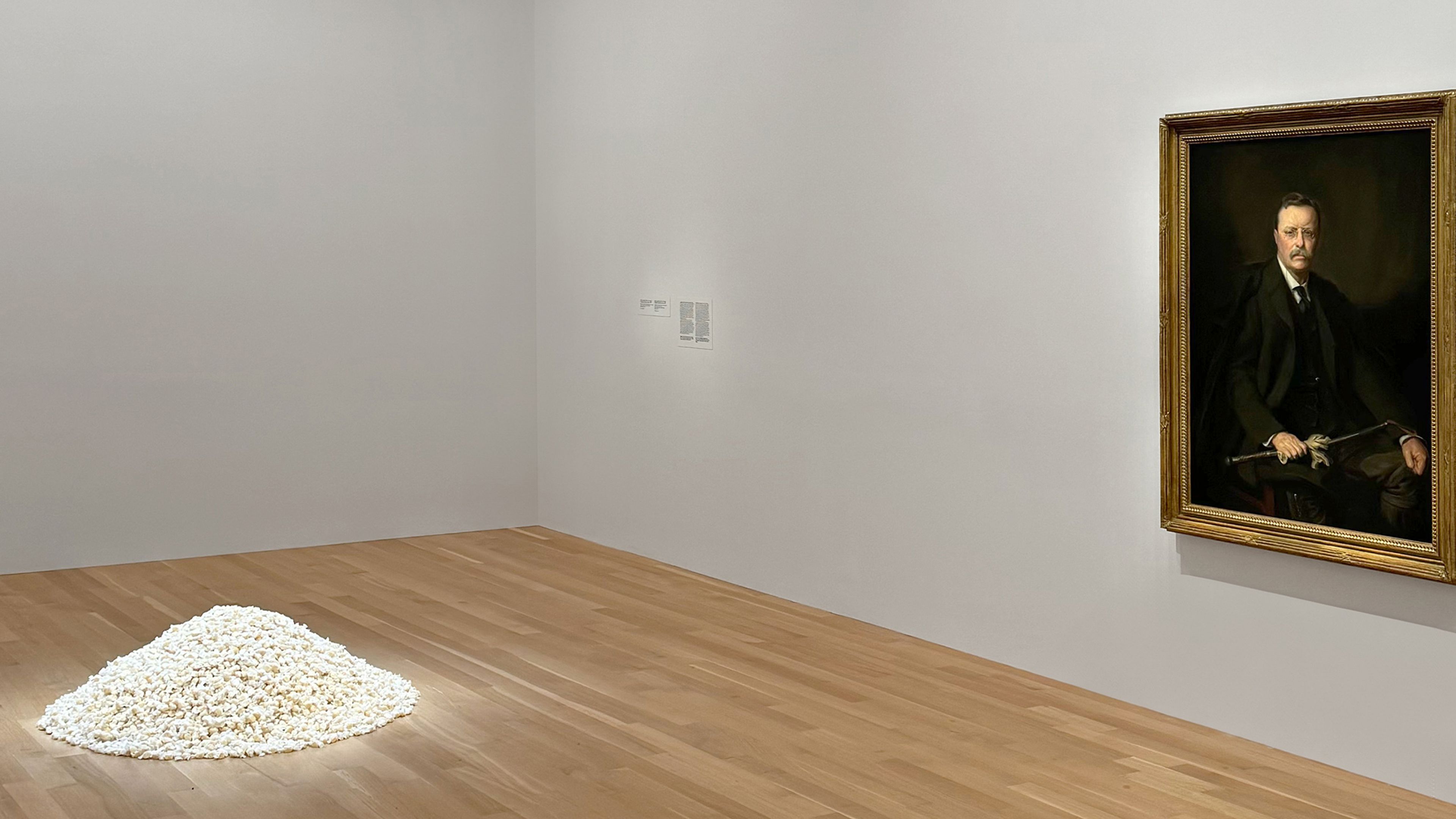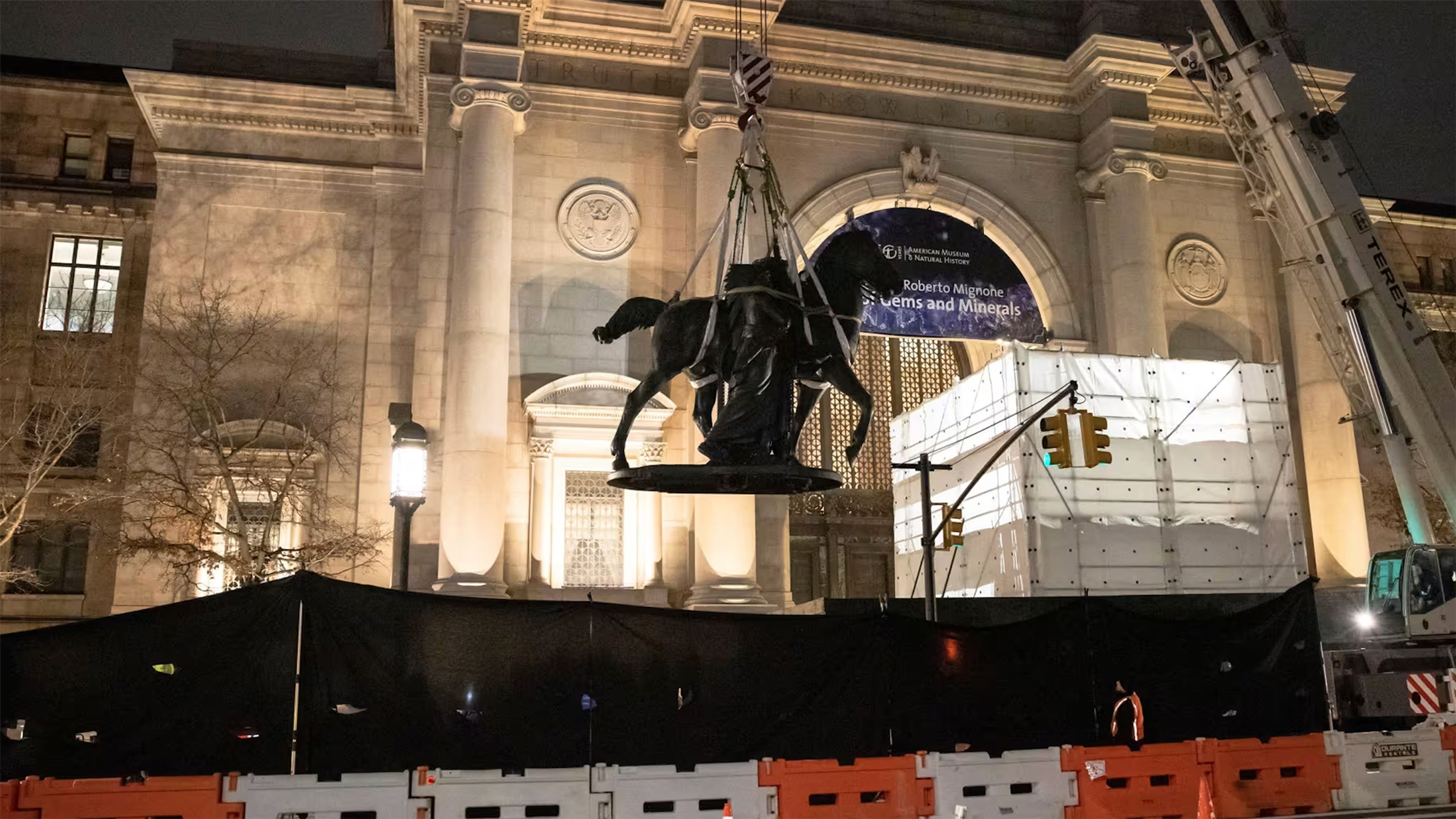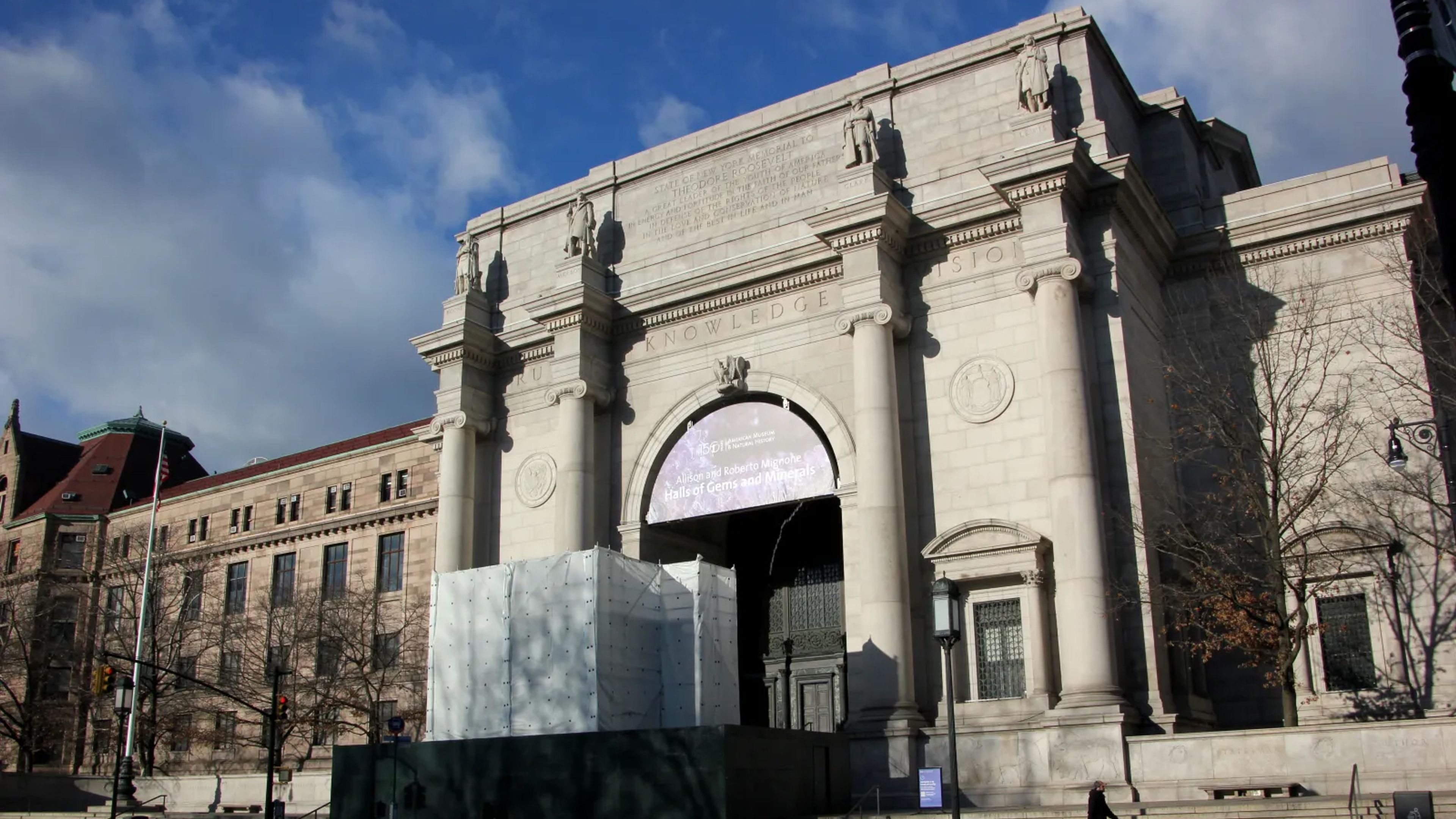Exceptional Works: Felix Gonzalez-Torres
“Untitled” (Natural History), 1990
Framed black and white photographs Overall dimensions vary with installation Thirteen parts: 16 3/4 x 20 1/4 inches each
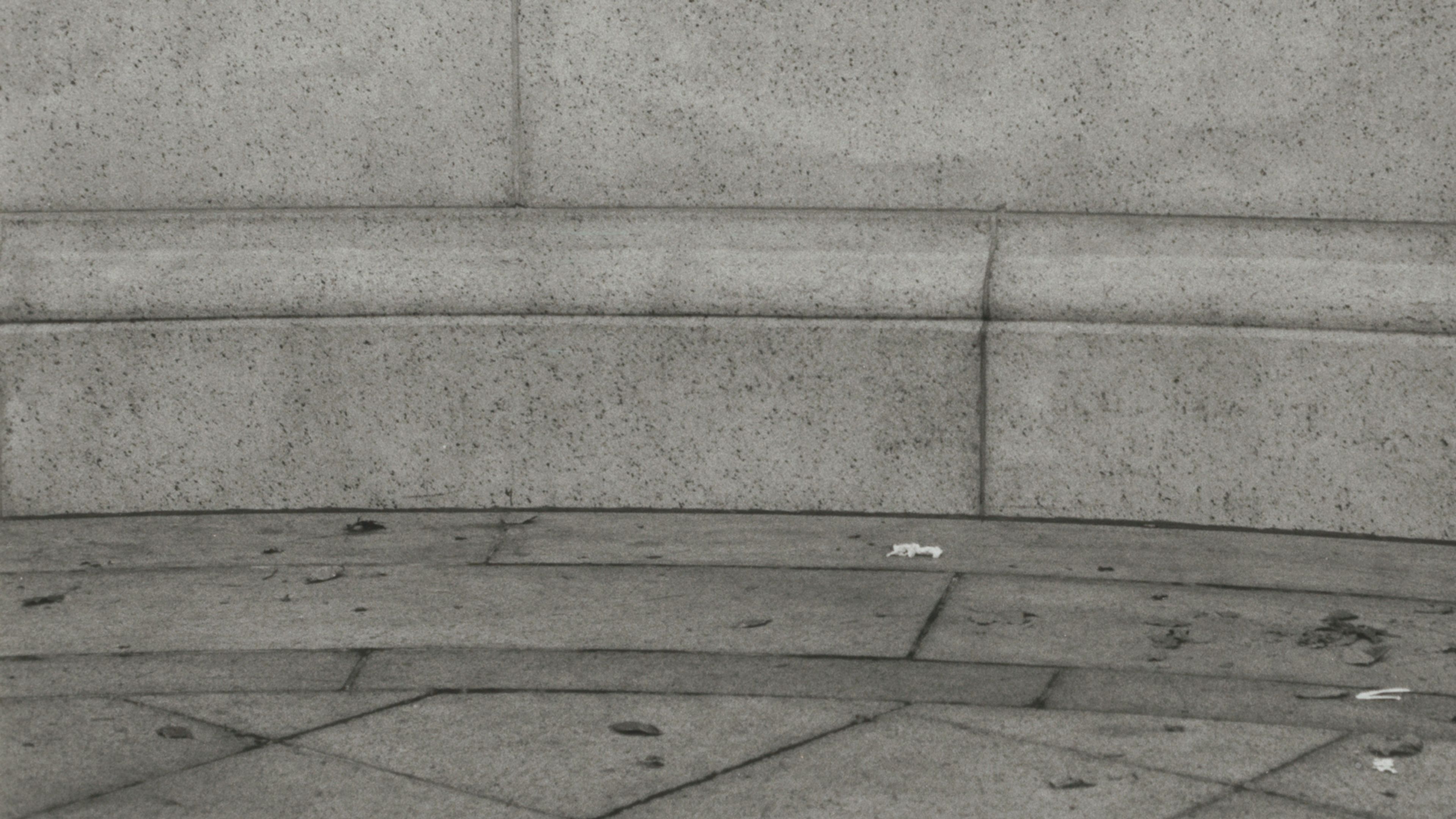
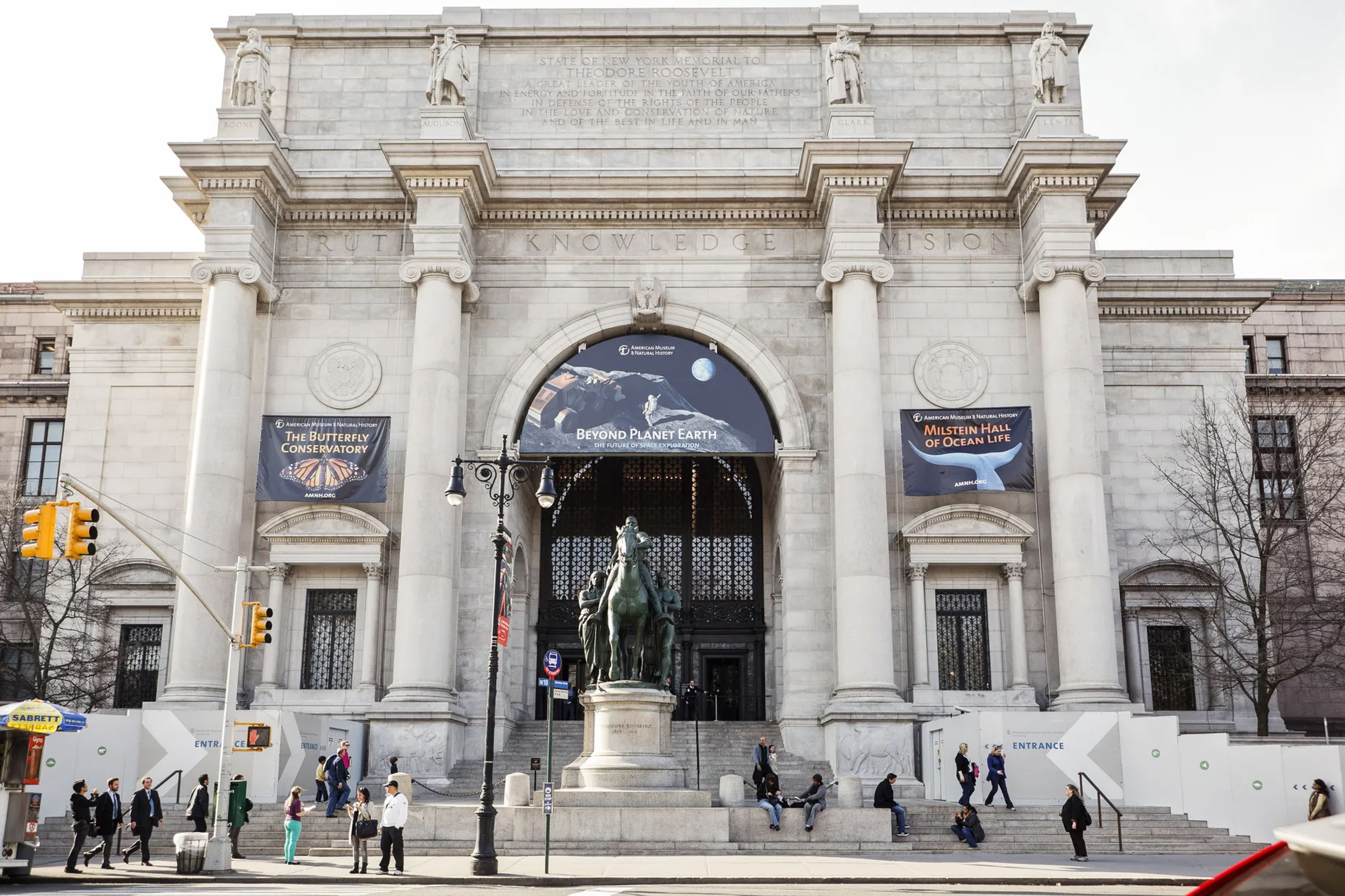
The bronze equestrian statue of Theodore Roosevelt by James Earle Fraser as it formerly stood outside the American Museum of Natural History in New York.
[“Untitled” (Natural History)] documents the inventory of idealized (male) attributes inscribed in tribute to Theodore Roosevelt … author, statesman, scholar, humanitarian, historian, patriot, ranchman, conservationist, explorer, naturalist, scientist, and soldier…. They represent Gonzalez-Torres’s abiding interest in inventing a new kind of public art, one that would remain mutable and open to interpretation. In our culture, monuments are most often fixed entities, monolithic and static in theme, denoting for society what its history and values are supposed to be.”
—Nancy Spector, Felix Gonzalez-Torres: America, 2007
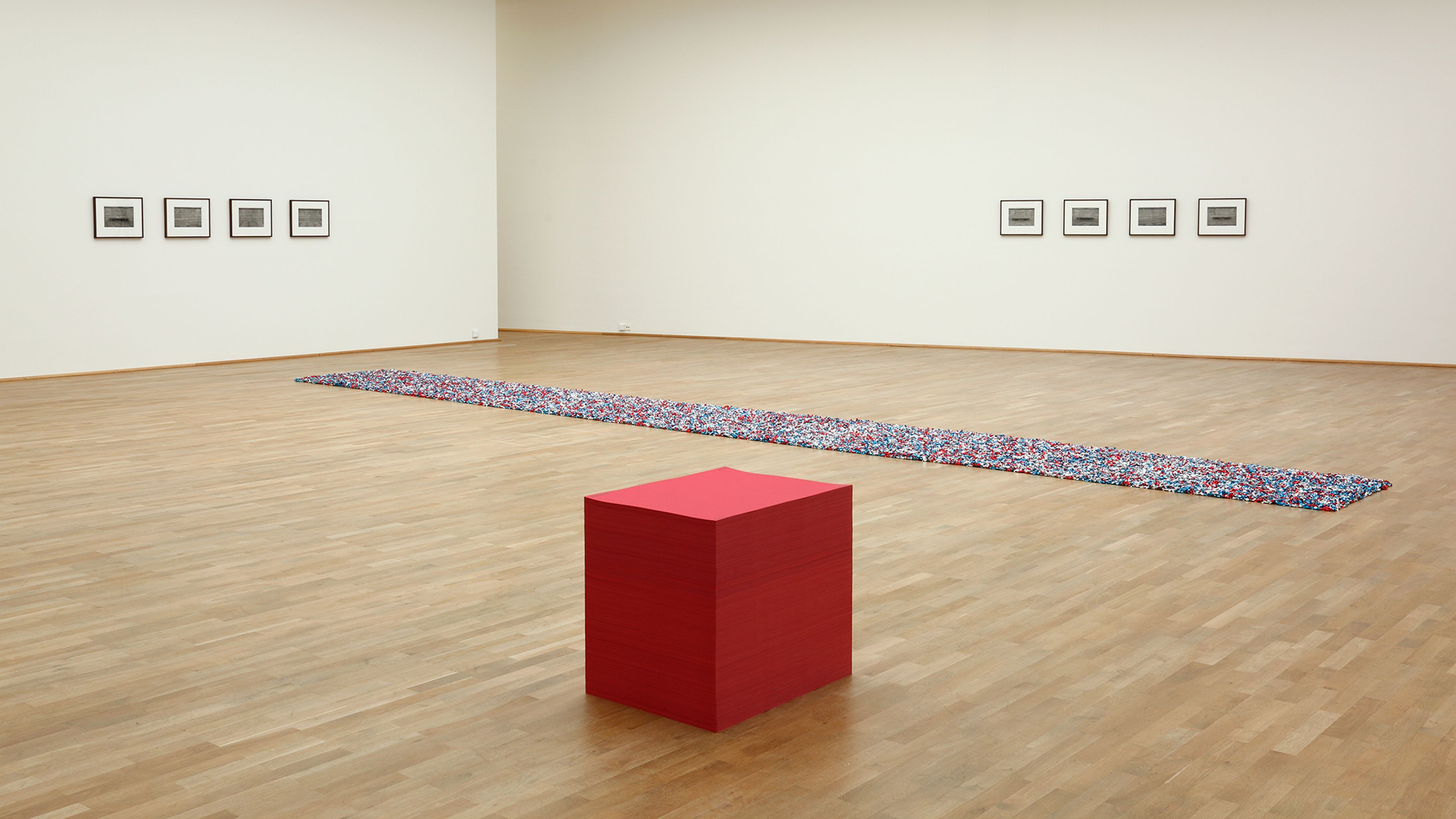
Installation vew, Felix Gonzalez-Torres: Specific Objects without Specific Form, Museum für Moderne Kunst, Frankfurt am Main, 2011
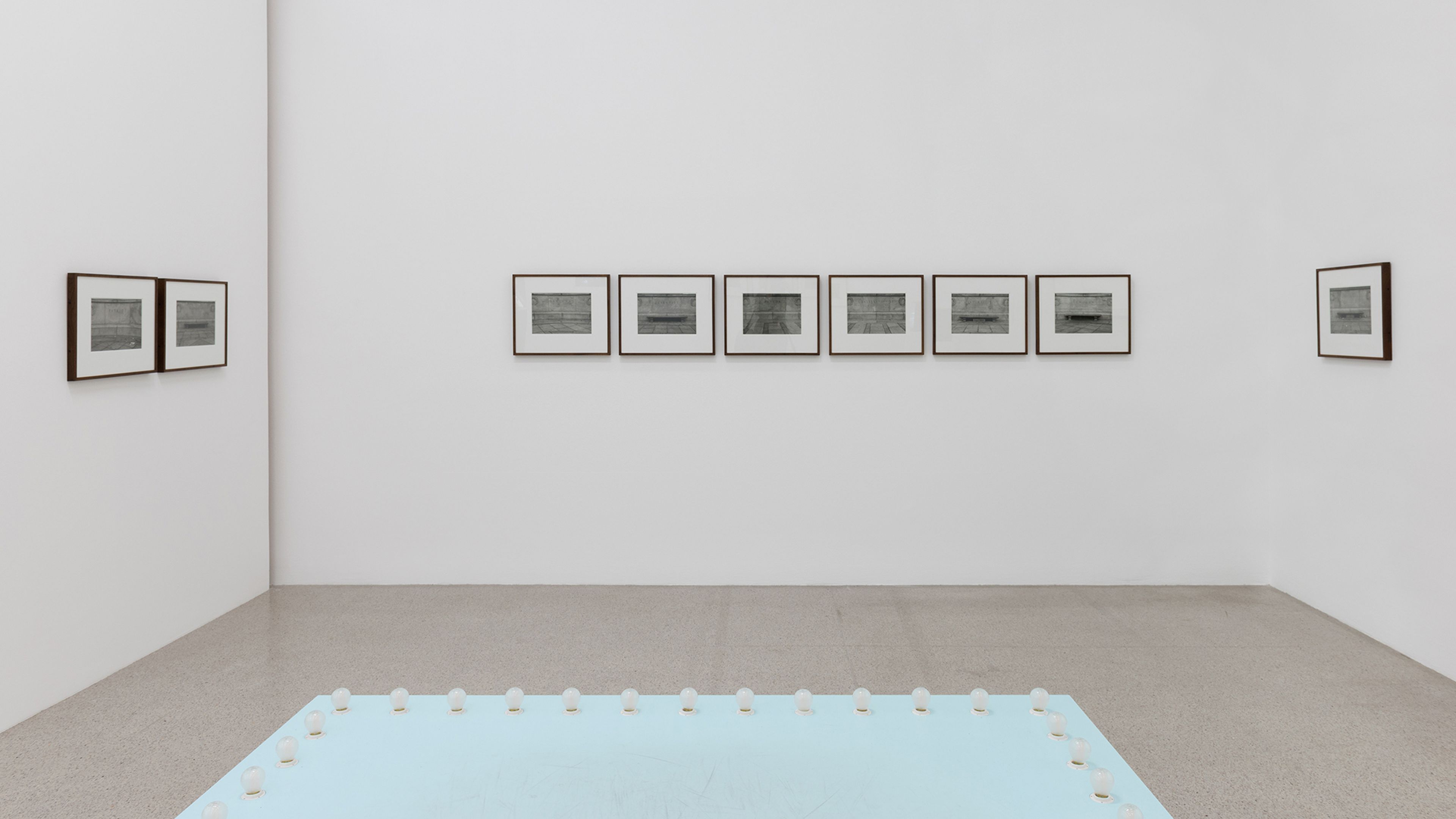
Installation view, to expose, to show, to demonstrate, to inform, to offer. Artistic Practices around 1990, Museum Moderner Kunst Stiftung Ludwig Wien (mumok), Vienna, Austria, 2015
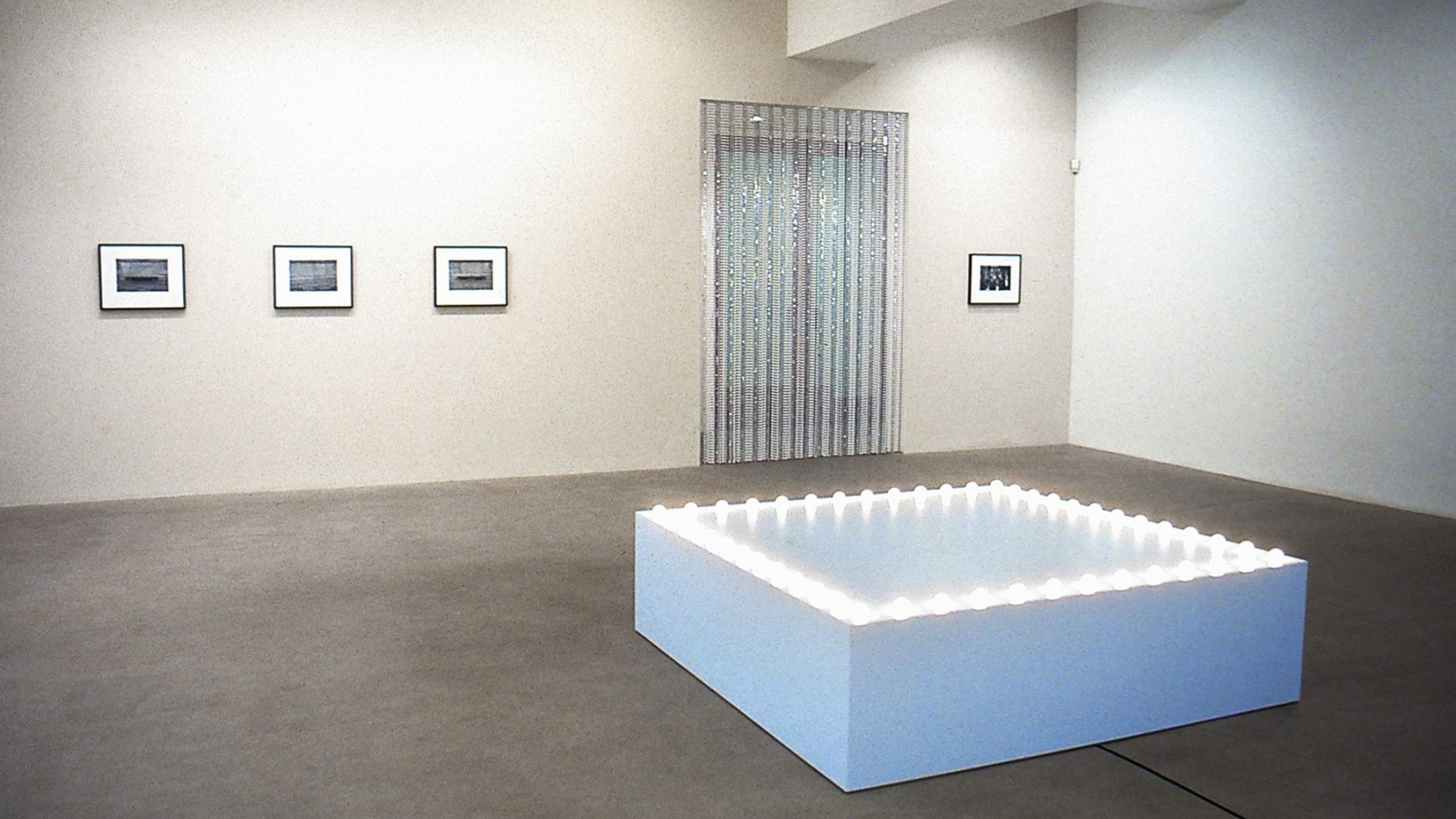
Installation view, Every Week There is Something Different, Andrea Rosen Gallery, New York, 1991
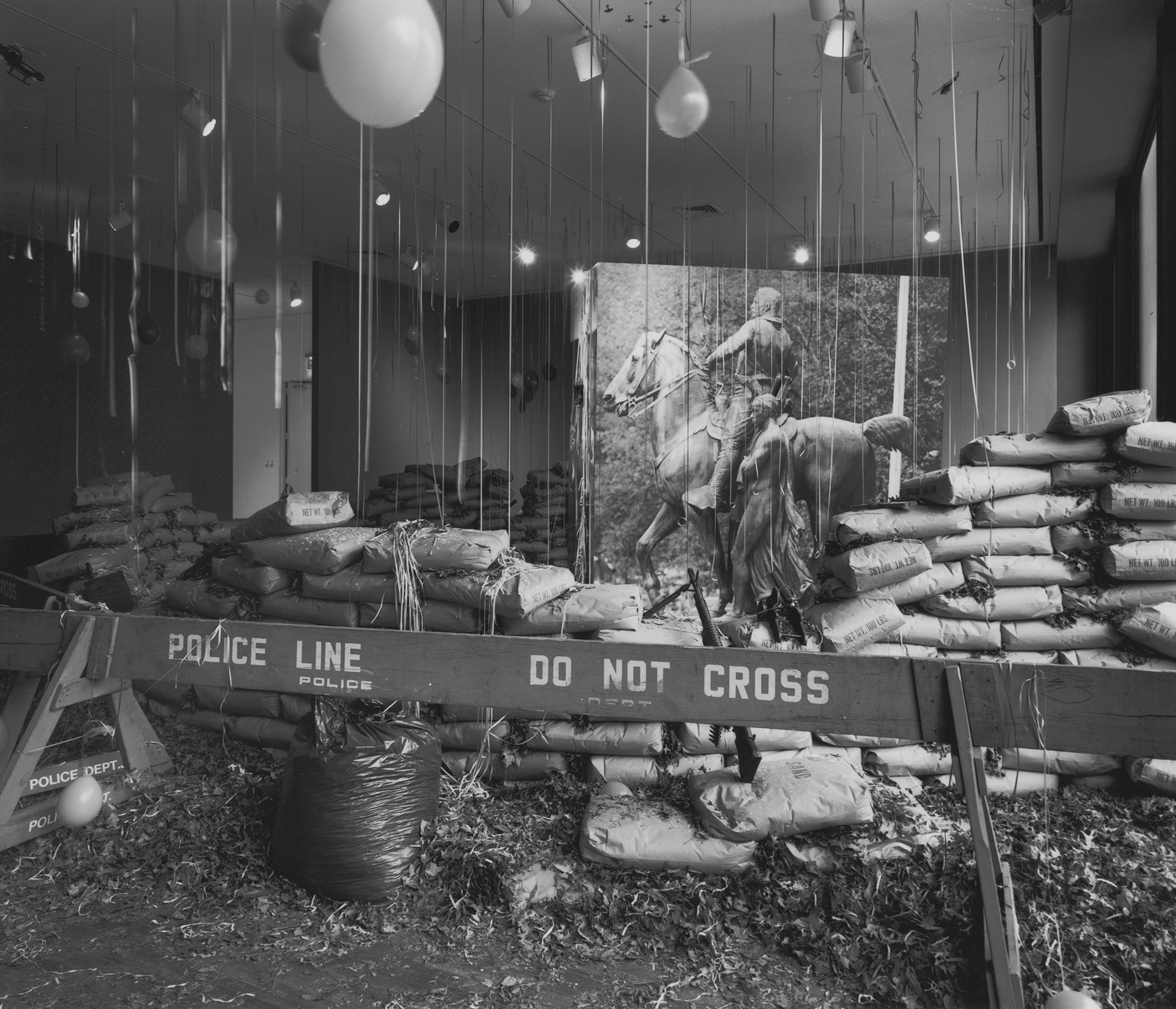
David Hammons, Public Enemy, 1991. © 2024 David Hammons / Artists Rights Society (ARS), New York
Created a year after "Untitled" (Natural History), David Hammons’s installation Public Enemy also engaged the Roosevelt Memorial outside the American Museum of Natural History in an address to received cultural heritage. Presented as part of the group exhibition Dislocations at the Museum of Modern Art in 1991, Public Enemy features photographs of the monument as the centerpiece of an intricate, whole-room installation featuring fallen leaves, balloons, police barriers, and sandbags with real and toy guns propped on top, aimed at the images of the statue.
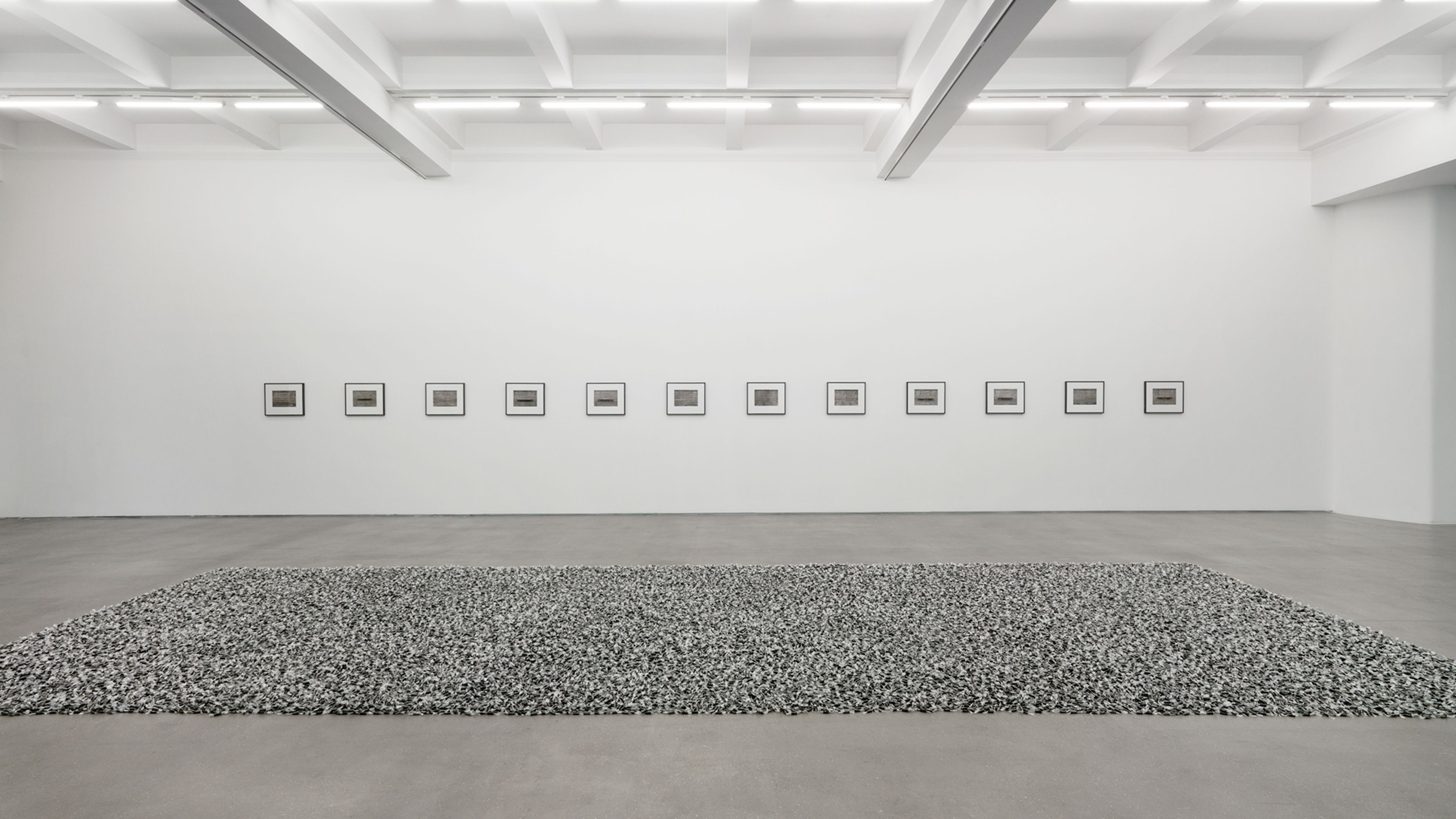
Installation view, Felix Gonzalez-Torres, Rockbund Art Museum, Shanghai, 2016

Inquire about works by Felix Gonzalex-Torres

